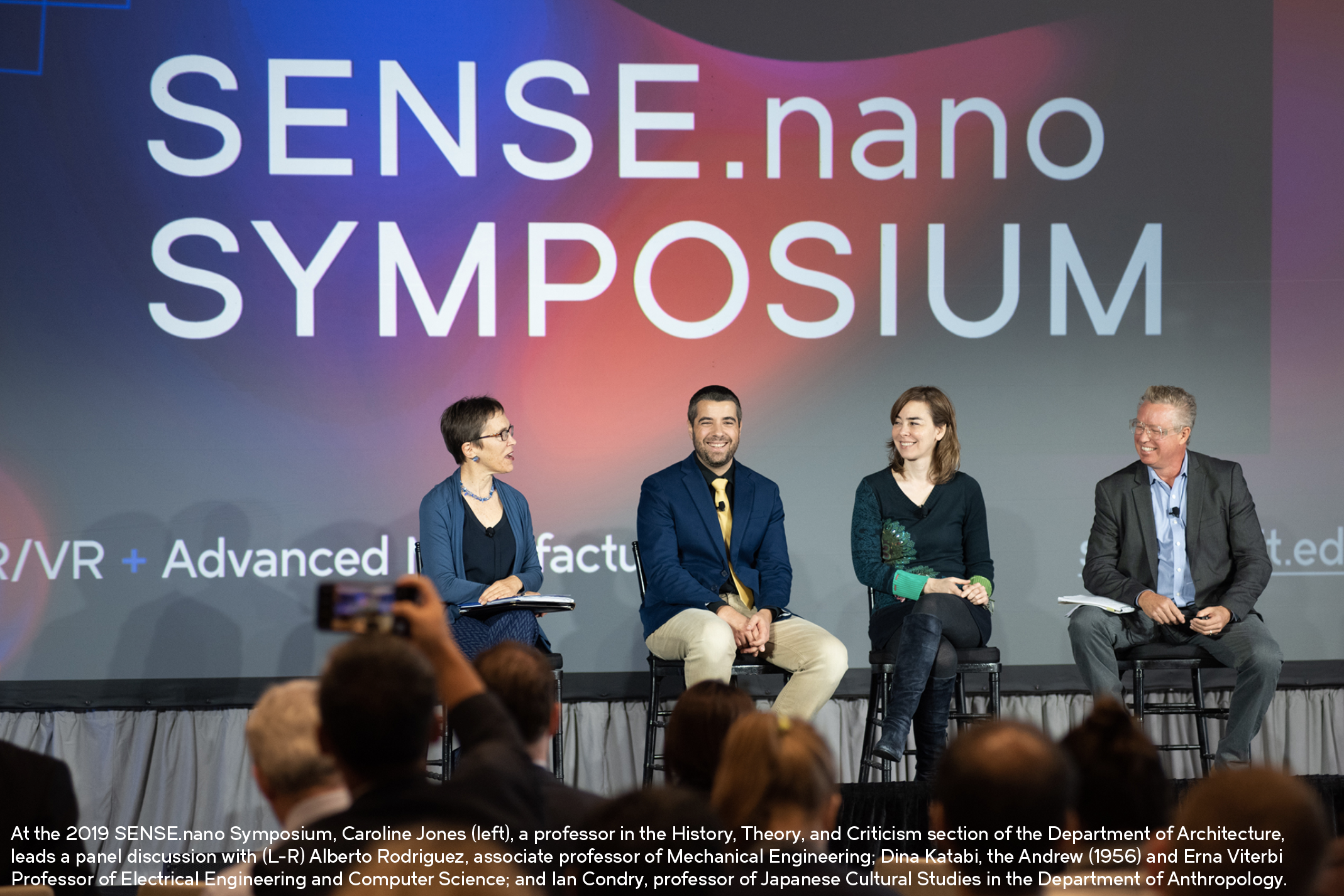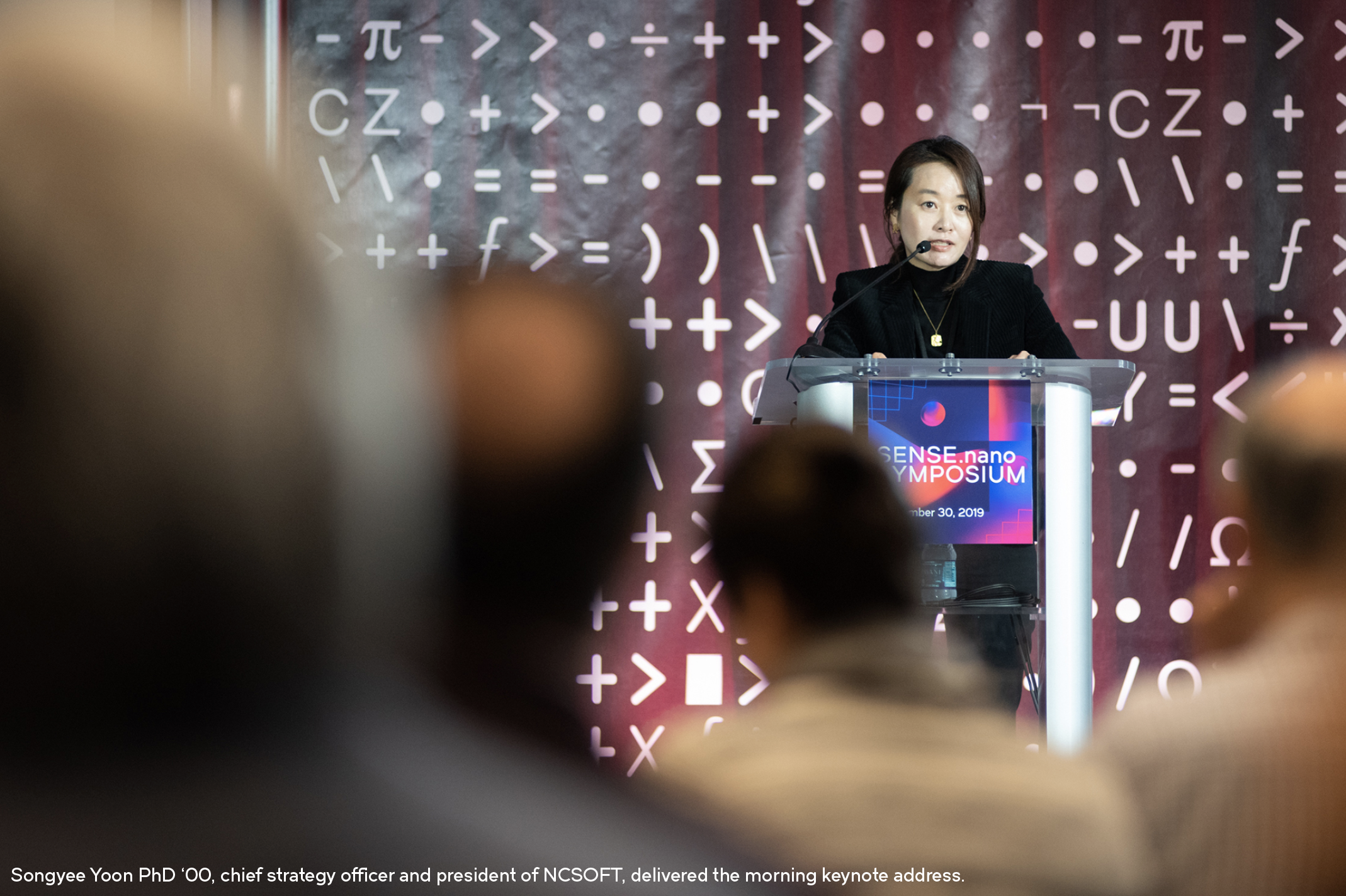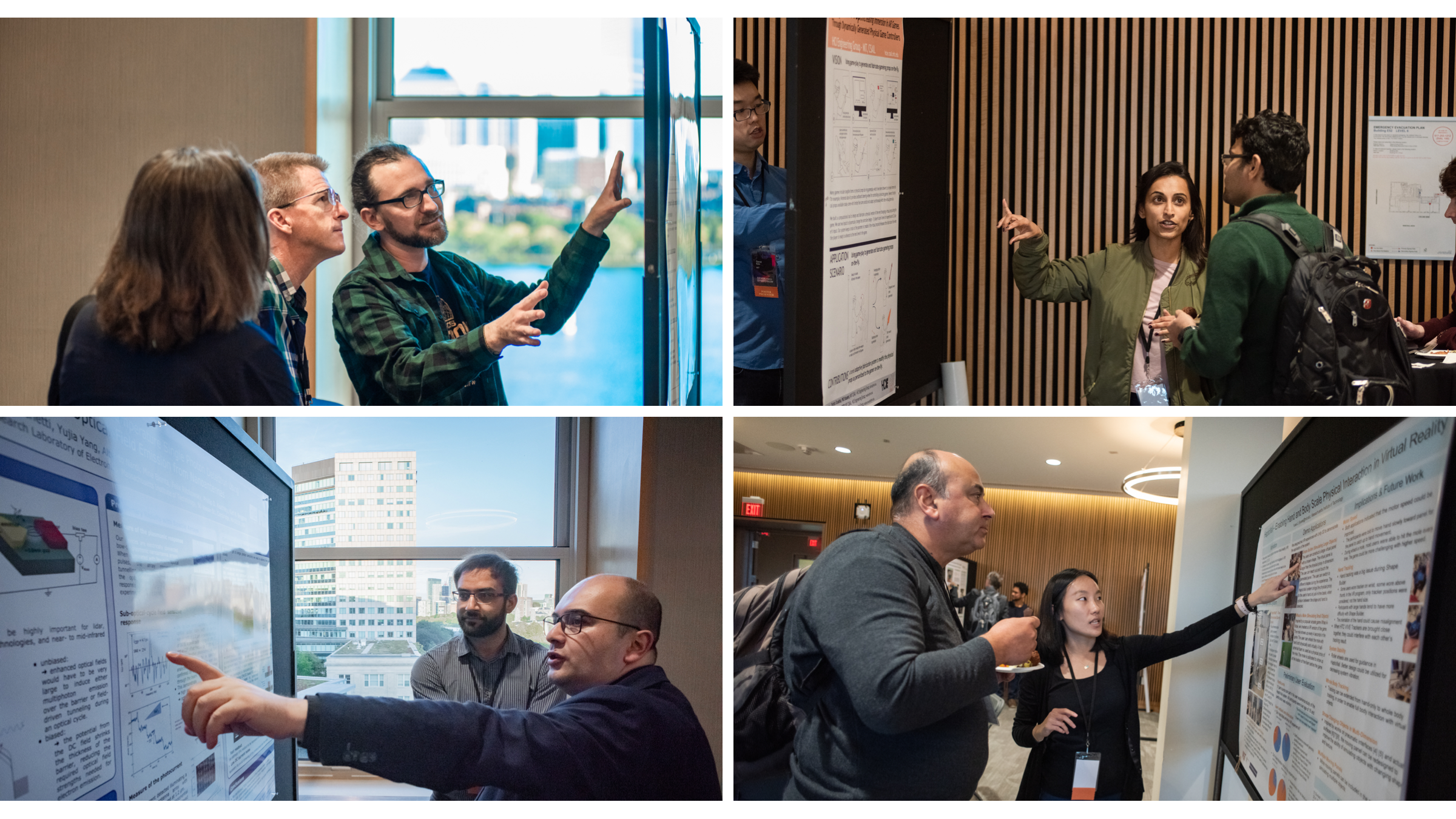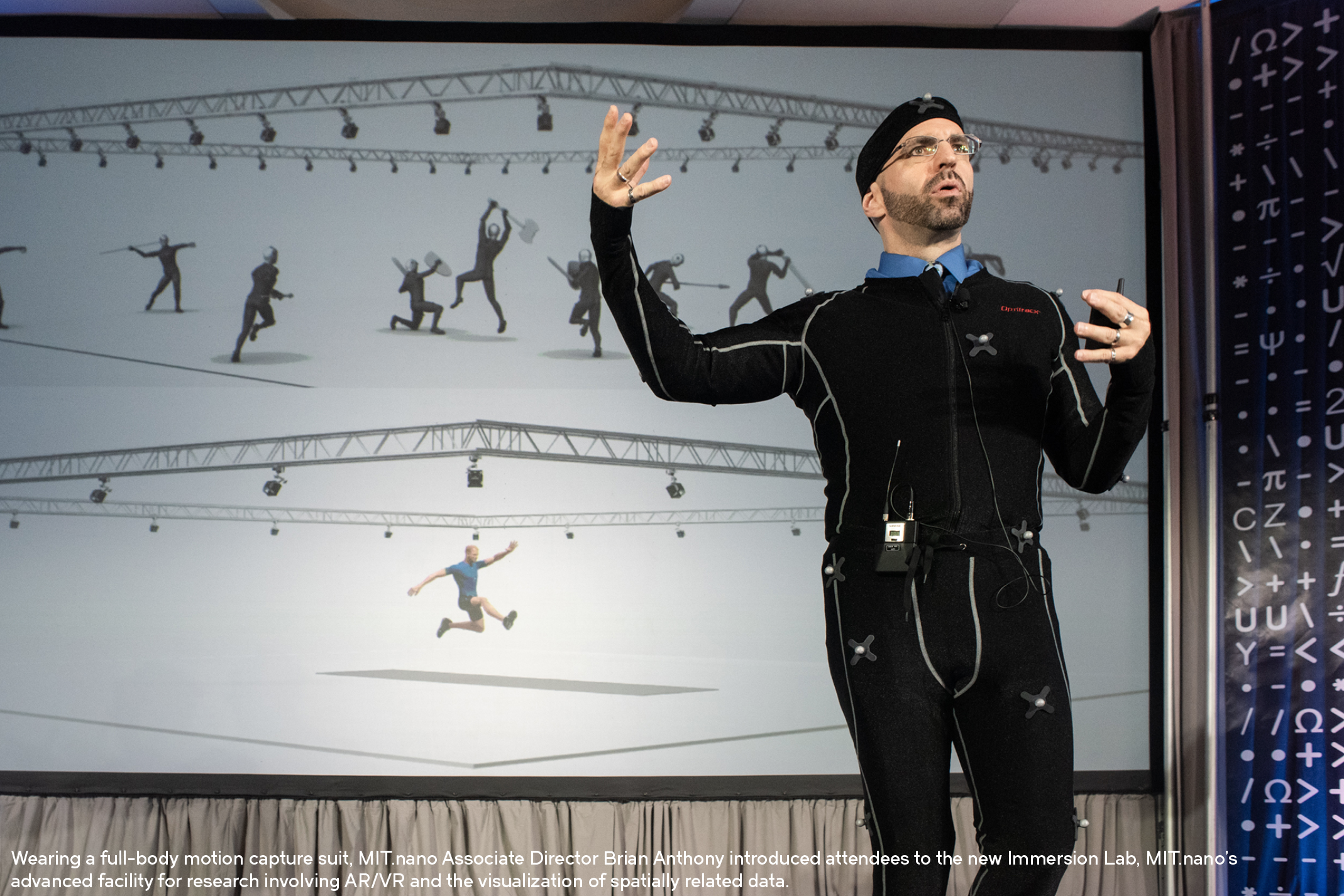MIT faculty, students, and researchers join with industry to envision future sensing technologies and their applications
The 2019 SENSE.nano Symposium offered a dive deep into the critical role sensing technologies will play in two areas of significance: sensing for augmented and virtual reality (AR/VR) and sensing for advanced manufacturing.

Held at MIT’s Samberg Conference Center on Sept. 30, the symposium brought together MIT students, faculty, and alumni with members of industry, external academic institutions, and other organizations for a full-day exploration of the topics. Brian Anthony, the associate director of MIT.nano who co-leads SENSE.nano, said the paired themes highlighted the pervasive impact of sensing across industries.
>> Watch videos of the presentations from the 2019 SENSE.nano Symposium
“As an enabling technology, advanced sensing is fundamental to the future of AR and VR. Innovation in sensing will be a driver for the software and hardware that powers immersive experiences,” said Anthony, who is also a principal research scientist and faculty director of the Industry Immersion Program in Mechanical Engineering. “For advanced manufacturing, sensing systems will help generate and collect data to improve manufacturing processes. At the same time, new ways of making will create opportunities to reimagine sensors and their functionality.”
SENSE.nano is an MIT.nano Center of Excellence, with a focus on sensors, sensing systems, and sensing technologies. The program funds annual seed grants and co-organizes the annual symposium around significant themes relevant to different disciplines and industries.

Co-sponsored by MIT.nano and the MIT Industrial Liaison Program (ILP), the symposium was comprised of a series of invited technical talks, panel discussions, presentations by MIT-launched startups, and a poster session. The agenda followed a flow of crosscutting sessions:
- Interaction, Fabrication, and Transportation
- Motion, Manipulation, and Sound
- MIT ILP and the Startup Exchange
- Stories, History, and Augmentation
- Sensing, Society, and Technology
Introducing the lunch session, representatives of seven startups presented their company advancements. The day concluded with a poster exposition of over two-dozen MIT-related research projects, launched by a series of one-minute technical pitches to the attendees from each presenter, and followed by the poster session in which they shared project achievements in more detail.

The SENSE.nano symposium coincided with a “sneak peek” open house of the new MIT.nano Immersion Lab, during which MIT.nano staff and associates generated individual avatars of over 200 visitors, immersed the participants in virtual landscapes of Mars, and demonstrated motion tracking of dancers and musicians in attendance.

Student volunteers from the VR/AR clubs of MIT, Harvard, and Berklee College of Music joined MIT.nano staff to deliver this two-day event. Located on the third floor of MIT.nano, the two-story Immersion Lab facility is a flexible platform for hardware and software research related to visualization, AR/VR, and the depiction of spatially related data.
Currently being outfitted with equipment and software tools, the facility will be available starting this semester for use by researchers and educators interested in using and creating new AR/VR experiences for new methods of education and research.
